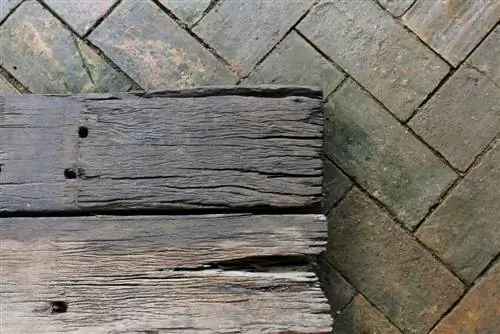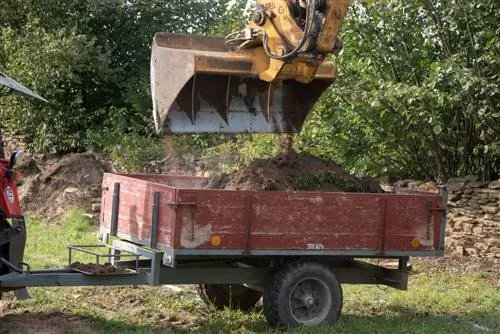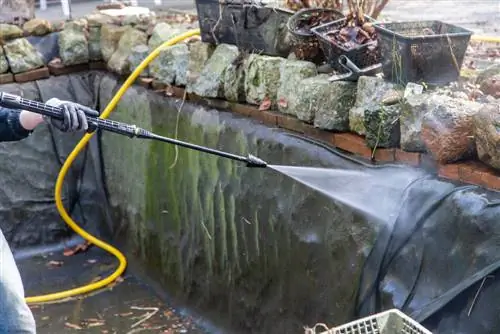- Author admin [email protected].
- Public 2023-12-16 16:46.
- Last modified 2025-01-23 11:22.
Railway sleepers were extremely popular because of their rustic look. Since the dangers to he alth and the environment have been known, old sleepers have been considered hazardous waste. Special regulations must be adhered to when disposing of the material, as the material requires professional processing.
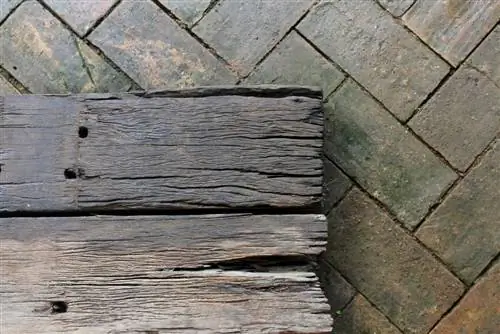
How can railway sleepers be disposed of properly?
Railway sleepers must be disposed of as hazardous waste because of their toxic components such as tar oil, benzo(a)pyrene and pesticides. Correct disposal is carried out by handing it over to a recycling center or a specialized waste disposal company, although costs may apply.
Why railway sleepers are dangerous
Wooden railway sleepers were treated with agents containing tar oil to protect them from environmental influences and pest infestation. It is now known that these products contain numerous toxic substances such as benzo(a)pyrene. These are considered carcinogenic and are sweated out of the wood even after decades. They can enter the body through skin contact or through the air we breathe.
Identify old sleepers containing tar oil:
- Material gives off a typical tar smell when hot
- Boards show sticky and black secretions
- Gnarled wood is cracked and grayish in color but without traces of fungi or pests
How old sleepers are disposed of
Since railway sleepers contain not only toxic tar oil but also other residues such as used oil and soot from railways or pesticides, the material is classified as hazardous waste. You must not burn the contaminated wood in the fireplace or on the campfire, as the substances can enter the environment in this way. Instead, ask your local waste disposal company how you can dispose of the waste.
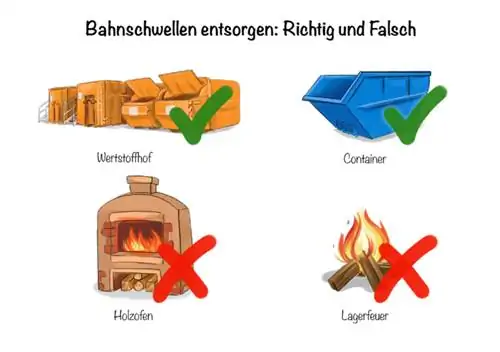
Possible costs
In small quantities, railway sleepers are often accepted free of charge at the recycling center. This changes depending on the region and volume. Loads of one ton cost around 140 euros. In addition to the public waste disposal companies, there are special waste recyclers who provide containers. These can be booked for a flat rate or billed based on weight.
Beware of offers from the Internet
In the past, it was common practice to use railway sleepers in landscape and garden design. They were installed in children's playgrounds and parks because the wood requires no maintenance and is still weather-resistant.
Legal situation
The marketing of contaminated old sleepers has been prohibited since 2002. The material may no longer be sold or given away. Nevertheless, there are numerous internet auctions or free offers from ignorant private traders. Such actions constitute a criminal offense, which is why you should stay away from them.
The railway is only allowed to hand over its used sleeper timbers if legally set limits are not exceeded. For benzo(a)pyrene the value is 50 milligrams per kilogram. The water-soluble phenols must not exceed a limit of three percent.
Wood containing tar oil that has already been installed must be removed if it is in sensitive areas. This includes drinking water protection areas and playgrounds as well as indoor spaces and gardens. The crucial factor is contact with people. Subsequent interventions such as sawing and drilling should be avoided.
Tip
If you purchased contaminated railway sleepers out of ignorance, make the seller aware of the applicable regulations and request a return.

